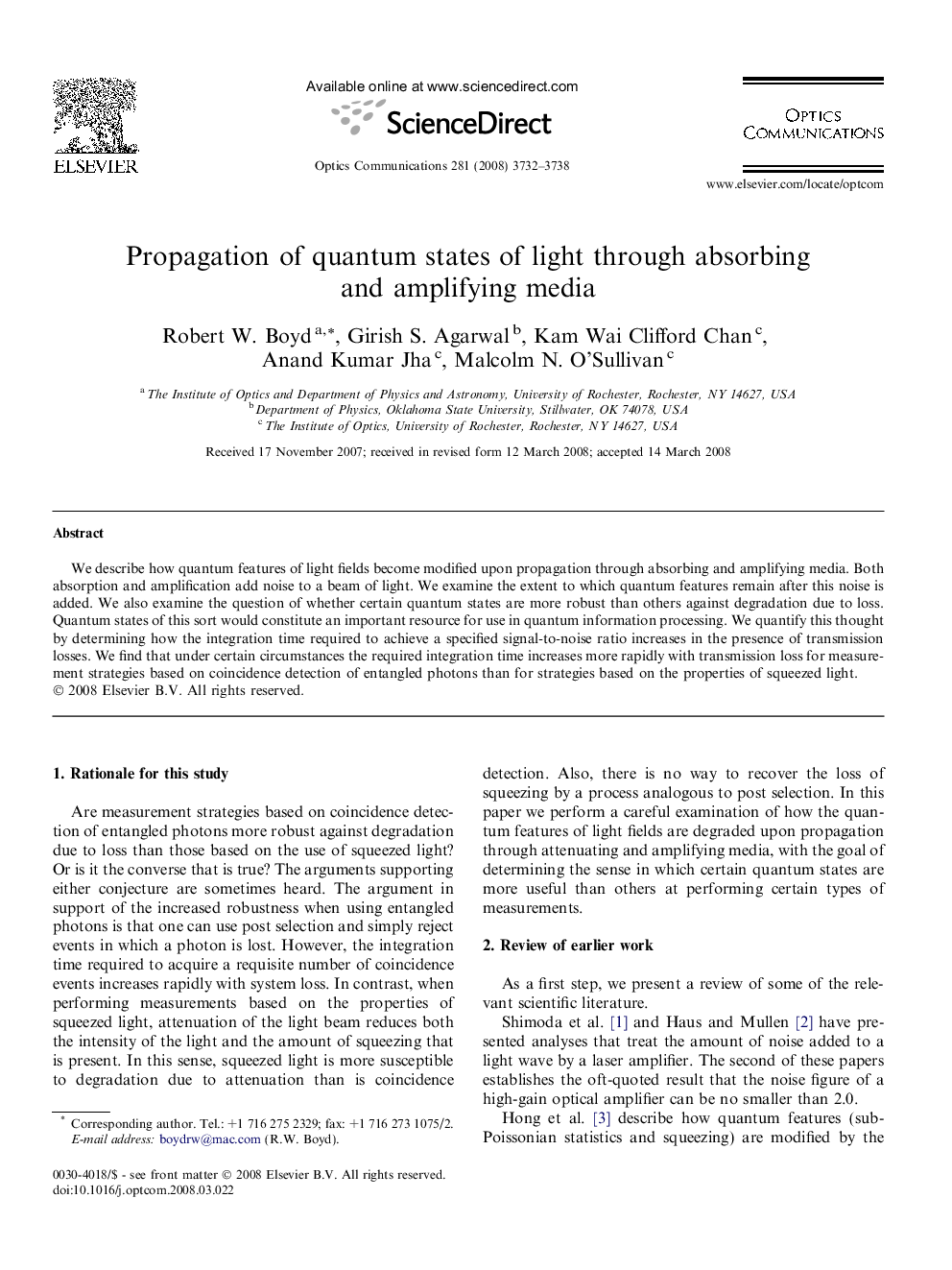| Article ID | Journal | Published Year | Pages | File Type |
|---|---|---|---|---|
| 1541055 | Optics Communications | 2008 | 7 Pages |
Abstract
We describe how quantum features of light fields become modified upon propagation through absorbing and amplifying media. Both absorption and amplification add noise to a beam of light. We examine the extent to which quantum features remain after this noise is added. We also examine the question of whether certain quantum states are more robust than others against degradation due to loss. Quantum states of this sort would constitute an important resource for use in quantum information processing. We quantify this thought by determining how the integration time required to achieve a specified signal-to-noise ratio increases in the presence of transmission losses. We find that under certain circumstances the required integration time increases more rapidly with transmission loss for measurement strategies based on coincidence detection of entangled photons than for strategies based on the properties of squeezed light.
Related Topics
Physical Sciences and Engineering
Materials Science
Electronic, Optical and Magnetic Materials
Authors
Robert W. Boyd, Girish S. Agarwal, Kam Wai Clifford Chan, Anand Kumar Jha, Malcolm N. O'Sullivan,
